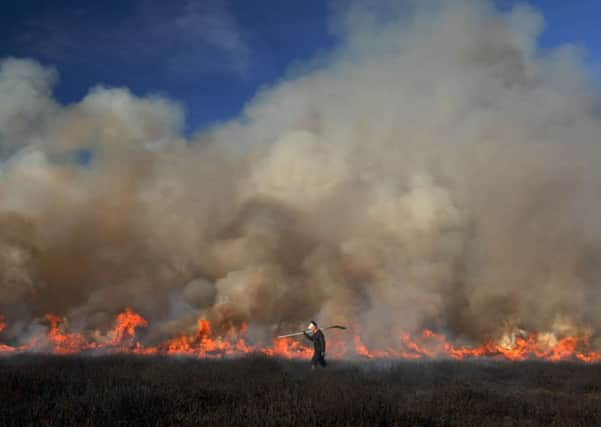Burning debate reignited


Dr Lee Brown, from the School of Geography at the University of Leeds, led the five-year research project into the effects of moorland burning on the ecohydrology of river basins - known as the EMBER project - in what researchers claim is the first authoritative study on the subject.
Heather burning is practised predominantly to support red grouse populations for gun sports and the academic study suggests that it negatively impacts upon peat hydrology, peat chemistry and physical properties, river water chemistry and river ecology.
Advertisement
Hide AdAdvertisement
Hide AdDr Brown said: “Until now, there was little evidence of the environmental impacts of moorland burning. Yet, many moorland owners and individuals who hold sporting rights to the land have felt pressured by regulators and conservationists to change their burning regimes.
“Unsurprisingly, a push away from moorland burning – a practice that started in the UK about 100-150 years ago – without solid scientific evidence to back up the need for change has created a lot of tension. The findings from the EMBER project now provide the necessary evidence to inform policy.”
The moorland burning season, which will run until 15 April 2015, started this week, and Amanda Anderson, director of the Moorland Association, insisted that there are important wildlife benefits to burning.
She said: “Burning allows fresh heather growth for sheep and red grouse to eat. Essential cover for ground nesting birds is also provided. A mosaic of edges and patches is formed across the moor for habitats and food.
Advertisement
Hide AdAdvertisement
Hide Ad“Crucially, burning older heather reduces the risk of devastating wildfires which destroy everything Moorland Association members, and other nature conservationists, strive to protect. It is just one of the many ways vegetation is managed.
“Members are committed to improving the health of the moors and believe it is vital to strike a balance between land use and better functioning deep peat. They are part of world-leading innovative projects to re-wet the moors, slowing the growth of heather, which in turn will need less burning.
“The long-term gains from healthy functioning peat for carbon storage, water quality and biodiversity will counter the more immediate effects highlighted in the EMBER report from burning carried out to aide that restoration.”
The EMBER project was funded by the Natural Environment Research Council and Yorkshire Water. It assessed the impacts of heather burning on peat uplands by comparing 120 patches of peat in 10 river catchment areas across the English Pennines, with an equal split between burned and unburned areas.
The area studied spanned from near Ladybower Reservoir in Derbyshire to Moor House National Reserve, which straddles the border between Cumbria and County Durham.